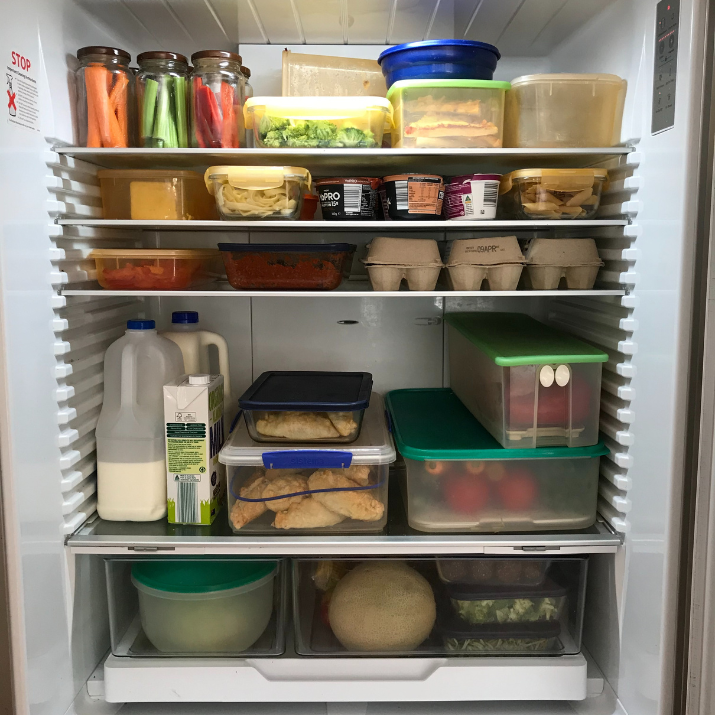
A very common question I get is how do you keep teenagers well fed? And I understand why this question is asked! With five kids now aged 24, 21, 19, 16 and 14 all living at home, keeping enough food in the house to keep everyone well fed and satisfied is challenging – especially if some of them are doing a bulk! To answer this question I will go through the basic principles and then add examples of what this looks like in reality at our place.
Before I go any further I need to state that I am not a nutritionist or any form of health expert and do not pretend to be. What I offer in this post is an example of what we do and some resources you can use to help you make sure your teenagers are well fed. Please do not take this as nutrition or medical advice 🙂.
The first resource I will point you to is the dietary guidelines for Australian teenagers. This PDF comes from raisingchildren.net.au and is based on the information published on the Federal Government website eatforhealth.gov.au
While I don’t do a count each day of what foods from each food group the kids are eating when I am thinking about the food I cook and buy for the house, I certainly do have this at the forefront of my mind. Our kids are all quite active and have various fitness goals so this I also keep in mind when shopping and preparing food.
I certainly do buy packaged food items to help feed the teenagers (you will see what in the coming paragraphs) but I do try to make as much as I can. I am able to do this as I work part-time and have time to do it and I also like cooking. This doesn’t mean it is the way everyone should do it this way and it doesn’t mean if you buy more food the kids aren’t being fed well. I will be adding in suggestions if you don’t have time or the inclination to cook additional food for the kids.
Plan ahead
One of the most effective ways to ensure that your teenager eats well is to plan ahead. Taking some time every week to plan your meals (or you can do it monthly as I do) and creating a shopping list for the week that includes food for lunches and snacks will mean that you start the week off on the right foot. When I plan our weekly meals I make sure that on the weekends I include meals that I can cook in double quantities that I know the kids love and will eat for other meals during the week.
For example, when I cook spag bol, one of the kids will happily have this for breakfast, another will take it in a thermos to school for lunch and another will have some pasta as a snack before heading to the gym. I basically cook twice as much spag bol as I need each time so it can cover other meals like this. In this post on the blog Easy recipes to make in bulk and help with meal prep I share some of my key recipes that work well for this.
Meal prep on the weekend
Doing meal prep on the weekend is not something everyone wants to do but it is a really great way to make sure you have enough food on hand during the week to feed hungry teenagers well and quickly. You can see my meal prep process in action here.
It has evolved significantly over the years. I started off just making a sweet and savoury item for the kids’ lunch boxes and it has expanded to make food for my lunches, additional food to eat during the week, condiments and prep food for some meals during the week if I have time. Each week I post my weekly meal prep photos and links to the recipes I use on Facebook. If you would like to see the posts and also find some inspiration from what followers of Planning With Kids are meal prepping you can find them here.
The veggies I cut up on the weekend only last a few days at most, so whenever I am cutting up veggies for an evening meal I always do extra to restock the fridge so there is always some on hand ready to go. On weeks where I only make something like muffins for the sweet treat that has a small quantity, I will try and make something else midweek so we make it to the end of the week.
You also might find these posts helpful if you are new to meal prep:
- Easy meal prep lunch ideas
- Tips for meal prepping veggies
- Easy recipes to make in bulk and help with meal prep
If meal prep isn’t your thing or you don’t have time for it then you could consider these options:
- buying precut veggies
- getting the kids to cook
- buying items that the kids can easily heat up or cook themselves that are nutritious and will work well for lunches and after school snacks
- in this podcast, a single mum shares how she outsources the cutting of her weekly vegetables using Airtasker so she can spend her time on other things
Involve your teenager in meal planning and preparation
Teenagers like all kids can have distinct preferences on what they do and don’t want to eat both for meals at home and what they take to school to eat. If you follow my menu planning process you will see that having the teenagers contribute to the menu plan is a key step in this process. I have also found that teenagers’ tastes can change frequently. What they were once happy to eat, they no longer really love or foods they used to avoid they are now happy to eat. Having constant communication on the foods they do and don’t like to eat is super helpful to avoid food waste and hangry teenagers!
As the kids have grown up they have all had at times an allocated task of helping me cook a meal in the kitchen, cooking a sweet treat and/or cooking a meal during the week. I have also spent time teaching each of them how to make basic things like:
- Scrambled eggs
- Omelettes
- Pasta
- Smoothies
- Steak
- Muffins
It is important that the kids have the skills to be able to make food on their own as they get older. It takes time to teach them and at the start, they do make a bigger mess than is ideal but they get better at it. Not only does this save you work in the long term but it also gives them a sense of independence and needed life skills.
Stock up on key food items
Following on from teaching the kids to cook snacks/meals for themselves I endeveour to make sure we have in the fridge or pantry all the needed items for the snacks/meals. The food they cook definitely goes in phases so I try to keep up with them and change the items we have on hand to reflect what the dishes of the moment are.
I also make sure to have plenty of the following available:
- fresh fruit and veg
- nuts and seeds
- yogurt
- tuna
- rice
- crackers / corn chips / wraps
- salsa / dip
- protein powder (for post workout)
Even with all this planning and prep, I still see the teenager occasionally open the fridge, stare blankly at it, and walk away dissatisfied with what they see. Sometimes their dissatisfaction is valid – it is like “Old Mother Hubbard” but if this is the case, it is most likely the end of the week and they are actually capable of going to the local supermarket to pick something up! We have an agreement with the kids that they can purchase items at the supermarket if they know we are out or if they feel like a particular item and we will reimburse them. (We will only reimburse them for items that I would usually buy for them to eat, so they cannot buy a ton of junk food and think that is going to work!)
Other times their complaints of having nothing to eat are not valid. There simply isn’t anything they really feel like or they are tired/bored/grumpy. I do my very best to ignore these complaints, knowing that if they are really hungry they will get something to eat from the available options.
